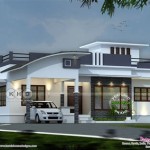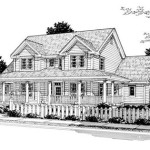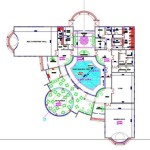Tiny House Plans: Designing Your Dream Home in a Small Footprint
The tiny house movement has gained significant momentum in recent years, as individuals seek to simplify their lives, minimize their environmental footprint, and achieve financial freedom. A key aspect of this movement is the design and construction of tiny houses, often characterized by their compact size, efficient layouts, and innovative use of space. Tiny house plans serve as the blueprint for these structures, outlining the dimensions, features, and overall aesthetic vision. This article explores the world of tiny house plans, providing insights into the design considerations, key features, and resources available to those interested in embarking on this exciting journey.
The Importance of a Well-Designed Tiny House Plan
A well-designed tiny house plan is crucial for a successful build. It lays the foundation for a functional and comfortable home, ensuring that every square inch is utilized effectively. Tiny house plans should be carefully tailored to the specific needs and preferences of the homeowner, taking into account factors such as living style, storage requirements, and desired level of privacy. A well-thought-out plan can prevent costly mistakes and minimize the potential for frustration during the construction process.
Key Features of Tiny House Plans
Tiny house plans typically incorporate several key features that optimize space and functionality:
- Multifunctional Spaces: Tiny houses often feature multi-functional spaces, such as a living room that doubles as a guest room or a kitchen that merges with the dining area. This approach maximizes space utilization and creates a sense of openness.
- Built-in Storage: To combat limited square footage, tiny house plans often include innovative storage solutions, such as hidden compartments, pull-out drawers, and vertical shelves. These features help to keep belongings organized and maximize usable floor space.
- High-Quality Appliances: Tiny houses often embrace appliances that are compact in size yet powerful in performance. This includes smaller refrigerators, efficient ovens, and space-saving washing machines. These choices not only save space but also contribute to the overall energy efficiency of the structure.
- Natural Light and Ventilation: Tiny house plans prioritize natural light and ventilation, often incorporating large windows and skylights to create a bright and airy atmosphere. This not only enhances the aesthetic appeal but also promotes good air quality and minimizes the need for artificial lighting.
Resources for Tiny House Plans
Numerous resources exist to assist individuals in finding the perfect tiny house plan:
- Online Platforms: Many websites specialize in offering pre-designed tiny house plans, ranging from simple and affordable to elaborate and luxurious. These platforms provide a wide array of options, allowing homeowners to browse, filter, and select a plan that aligns with their vision and budget.
- Tiny House Magazines and Books: Numerous magazines and books dedicated to the tiny house movement feature stunning examples of tiny homes, showcasing innovative design ideas and providing inspiration. These publications often feature plans and blueprints, offering valuable insights into the practicalities of tiny house living.
- Tiny House Architects and Designers: For those seeking a truly customized experience, hiring a tiny house architect or designer can be invaluable. These professionals bring expertise and creative vision to the table, working collaboratively with homeowners to develop a unique and tailored plan that meets their specific needs.
Conclusion
Tiny house plans offer a gateway to a fulfilling and sustainable lifestyle. They provide a framework for creating a compact, functional, and aesthetically pleasing home that aligns with modern sensibilities. By carefully considering design features, exploring available resources, and engaging with the tiny house community, individuals can embark on a journey of minimalism, self-reliance, and creative living.

Tiny House Floor Plans With Lower Level Beds Tinyhousedesign Design

Tiny House Plan Examples

Affordable Tiny House 18 X 28 Adu In Law Cabin

Tiny House Plans For Houseplans Blog Com

Studio500 Modern Tiny House Plan 61custom
:max_bytes(150000):strip_icc()/__opt__aboutcom__coeus__resources__content_migration__treehugger__images__2018__03__tiny-house-macy-miller-12a993a38eda4913a0e8ab1b231e79d3.jpg?strip=all)
Want To Build A Tiny House Here S Where You Can Find Floor Plans
:max_bytes(150000):strip_icc()/ana-tiny-house-58f8eb933df78ca1597b7980.jpg?strip=all)
4 Free Diy Plans For Building A Tiny House

Free Tiny House Building Plans Marjolein In Het Klein

12 X 20 Tiny Home Designs Floorplans Costs And More The Life

Cypress 24 Building Plans Tumbleweed Houses








